#council communism
Text

Koromaru from the Persona series is a council communist!
25 notes
·
View notes
Text

The Yugoslavian Way, 1958
#communism#nezamjenjivi tito#josip broz tito#marxism#syndicalism#council communism#marxism leninism#yugoslavia#yugoblr#20th century#quotes#1950s
22 notes
·
View notes
Text

Welcome to the council, comrade!
#the last of us#tlou#hbo max#hbo#live action#video game#playstation#communism#council#council communism#socialism#revolutionary#maria#commune#tommy#joel#ellie#jackson
95 notes
·
View notes
Text
the importance of social technology in social change
TLDR: By retooling, devouring, and innovating our social technologies, we can create participatory organizations that enable egalitarian social change. These organizations should be animated by an understanding of hierarchy, its relation to oppression writ-large, and how to create and employ social technologies that distribute power, rather than concentrating it.
Introduction
We take technology for granted in general (most people I know don’t think much about how water gets to their sink unless it doesn’t work, for example), but this seems especially true for our social technologies. We take things like democracy, laws, and even the nuclear family form at face value and as fundamental parts of reality.
So, what is technology, and how does it relate to our pending conversation? What is the throughline between obvious technologies like a stone axe and my iPhone, and more nebulous ones, like speech and the nuclear family? Any technology you can imagine takes concepts and knowledge and creates a method of applying them to specific goals, objectives, or functions. This doesn’t preclude emergent uses for tools, as you can probably think of using tools in unintended ways. This definition is useful to keep in mind as we realize that the technologies at present, animating the status quo are inadequate. We need something different to make radical, roots-grasping change.
And, for the sake of change, we need a specific way to achieve it. Part of this is technological; we need to figure out models of relating and working with one another that prefigure the changes that we want to see. To create and modify those technologies, we need to figure out which concepts and knowledge we will use.
Prefiguration can be described as “creating the new world in the shell of the old”. It’s doing things in the present that we think will get us to our imagined future. This implies the need to have a coherent conception of what is currently happening, and change will look like.
Currently, we live in a hierarchical, bureaucratic hell. This might best be epitomized by trying to obtain official identification recognized by our respective state. From all of the forms that you fill out, to the additional paperwork needed, to the horrible experience of getting that information approved, there are a lot of issues that this creates, from an experiential standpoint. One of the more under-realized aspects of issues such as this is how these experiences alienate us from the ability to do things for ourselves. Bureaucracy is a way to manage hierarchy’s inherent simplification of reality. A king couldn’t actually run their kingdom themselves, so they create layers of functionaries, under their control, to (try and) manage that complexity.
Along with my opposition, I’d like to propose something. A theory of change, that allows us to do that prefiguration work, leaving behind some of the negative methods of relating as currently mediated and handled. Since we live in a very hierarchical and bureaucratic world-system, constituting a colonial-imperialist, cisheteropatriarchical, ableist hegemony, if we create non-hierarchical/heterarchical organizational forms that allow us to relate in alignment with our values, then we will achieve a more egalitarian world, because of these organizational forms addressing fundamental contradictions in the way that society, from the personal to the global scale, is administered and ordered at present.
Having non-hierarchical organizational forms will allow us to become self-managed and autonomous, gaining collective control over collective issues, and individual control over individual issues. What is hierarchy, though? For our purposes, hierarchy can be seen as the glue that brings oppression together. It binds structures of domination, coercion, and power (specifically power-over) into oppression writ-large. This is what makes the act of arranging organizational forms a pyramid, where value, authority, and decision-making ability are concentrated toward the top. It is not a problem if some friendly games and competitions employ hierarchy in the broadest sense. The issue comes where, in that game, the folks who won got to eat and the folks who lost went hungry. The power imbalance and value judgments are what make hierarchy dangerous.
Alternatively, non-hierarchical structures that prioritize non-coercive, non-domineering principles, that enable positive versions of power-to (the ability to act) and power-with (the ability to act collectively, towards collective interest) have much more liberatory potential at their foundation. That’s what we’re aiming for, social technologies that allow for horizontal relating.
The pieces of horizontal organizations
The foundation of these horizontal, heterarchical forms should be in values and principles that enable relating in that way. Some of these values might be joy, autonomy, radically informed consent, cultivating ownness-uniqueness, and solidarity. These are defined as:
Joy: This should be a group that is constantly looking critically at how we engage with productivity, work, and formality from the perspective of prefiguring spaces of fun, play, and levity -- infusing it into as much of the work as we can. If it feels like a drag, that should at the very least give us pause. While we will not be able to avoid negativity wholesale, we can be intentional about minimizing the moments where it is unnecessary.
Autonomy: Each unit of interest (teammate, team, section/wing, whole) can operate independently from other elements as it desires, without imposition.
Radically Informed Consent: All decisions that include or impact someone should be made with that person (1) in that discussion/process and (2) having as much context and information as they need to be aware of the implications of the decision being made.
Cultivating Ownness-Uniqueness: The group should allow for a cooperative orientation that is based on finding what is best for all involved as individuals, concerning the collective goals. The group should be a tool that cultivates this orientation, rather than existing for its own sake and becoming something that holds power over the people in the space.
Solidarity: People in the group should work together around common interests and affinities, made clear in the joining process, grounded in (1) centering the most marginalized in society and/or our specific context within our spaces, and (2) sharing in the responsibilities of achieving what the group sets out to do.
Having these values as described gives us a shared language from which to judge how we relate to each other using the organizational forms we will set out to describe, to make sure that it gives opportunities to widen the spaces where our organizational aims can be achieved.
The components of these forms, the building blocks that sit atop the foundation, creating the organization when assembled, are the teammate, roles & tasks, aims & domains, the team, assemblies and summits, and the areas, functions, and committees. These are defined as:
Teammate: This is the individual in the structure. A specific person, who interfaces with the other parts of the structure.
Roles and Tasks: This is how the work is distributed within an organization, in line with the foundational principles and the aims of the specific team and organization as a whole.
aims: Objectives of the unit of interest. The thing that the unit of interest is trying to accomplish.
Domains: The range of focus a specific unit of interest has within an organization. What the unit of interest is responsible for doing.
Team: A collective unit within the structure. Multiple teammates coming together.
Assemblies and Summits: Multiple teams (or delegations of teams) coming together to deliberate on mutual aims, across mutual domains.
Areas, Functions, and Committees: Ways to group teams together (or create new teams) to cover specific aims.
These allow for us to have specific modes of relating with each other around specific things that we want to accomplish, from the individual to the organization-wide scale, with the potential to connect with outside organizations.
These values and components are important to create are heterarchical organization, but it doesn’t tell us what the organization will be doing. We know that it’s meant to be aimed towards social change, but what does that actually look like? I think that there are three interrelated things that the organization should achieve for it to be successful at its overall aims. There should be robust analysis, care work, and effective, radical action. These are described as:
Care Work: Embedding the ideas of restoration, rest, healthy engagement, sustainability, and healing into the core of the organizational structure. This can be done through things like healing circles, accountability circles, meeting "non-organizational" needs that deal with the making and remaking of folks (a la childcare, food, emotional care, etc), and other methods.
Robust analysis: Creating mental models that can approach an accurate understanding of the world, along with how to be experimental and learn from those experiments (while not seeing participants as disposable, or coercing folks into things). This horizontal orientation encourages us to be able to catalyze autonomous & self-directed action, rather than make ourselves indispensable to a movement. We should use these forms to organize ourselves out of a role, in a sense, through things such as making sure other people understand how to do what we do, and not hyper-specializing.
Effective, Radical Action: The organization, through the above two functions, should be able to achieve the goals that it sets. It should be successful at the current conjuncture, and these successes should build up to the general goals of the organization. There should be a conception of strategy, campaigns, logistics/operations, and tactics.
For any of these initiatives to be successful, there needs to be a basic security culture. Pretty much any social change org that is directly effective or building towards effectiveness necessitates modes of protection for the people in the organization. We need to protect from state, corporate, and non-state reactionaries. This is worth an in-depth conversation, but basic things like not talking to those forces, being mindful of where and when certain information is shared, if at all, and screening for new members, the intensity of which is proportional to the openness of the organization, and not fedjacketing (claim that someone is the cops) people. This would be paired with collective discussion to establish those agreements, and training/collective study to inoculate folks against bad security practices.
Arranging the pieces
Now that we’ve built up the different parts of our organizations, we can describe some ways to bring them together. I propose three different organizational shapes: phantom cells, networked guerrillas, and fractal teams and working groups. These are differentiated by the ways that the teams within the org are connected and relate to one another.
Phantom cells are the most ephemeral formation that I’ll describe. These are temporary teams created with wide variations towards some goal. They don’t even have any meaningful awareness of the composition of other cells. Actions are motivated by catalyzing forces that follow a general flow of event → action → report-back → action. Something happens that motivates a cell to form and act, that cell publishes information about their action, along with instructions on how to replicate and the ideological motivation behind it, and others follow suit. This repeats and spreads out, through stigmergy. It’s like how social media trends work. All follow a similar format, evolving as they spread until they saturate a space and wane. The goal here is to combine distributed intelligence through information posting, replicability, and inspiration.

A diagram representing phantom cells. Pill shapes with the word team in the middle are spread around on a white canvas.
This form is inspired by Tiktok and the SHAC campaign. If we could have groups of folks who: (1) find concrete goals & replicable methods for finding connected goals in specific contexts, (2) create compelling narratives around acting in line with those goals, and (3) encourage easily replicable actions, consistent pressure, and sharing the results so that it spreads. This allows for action to become highly distributed, where unity isn’t based on allegiance to specific organizations, movements, or formations. This type of operation is most useful for trying to achieve protracted, quick, decisive, small actions against a target.
Networked guerrillas are cells (or teams) of folks that have a well-rounded skill set, and who work consistently together. I imagine it being like a team for an RPG (role-playing game) campaign where each character is in a different class. This group should have a relatively high amount of self-sufficiency, to be able to achieve aims within their domain without much outside assistance. Each cell is animated by a general alignment of principles, vision, and values. Cells are also designed to link up with other cells, of this type, to accomplish bigger goals and complete bigger actions. There might also be a bundle of cells “in the middle” to help coordinate resources between cells and provide additional, more specialized, and contextual resources. Ideally, there is a rotation and continual morphing of the core to not become a failure point. This is why it’s important to have the cells be as self-sufficient as possible. Every connection is an enhancement of capability, rather than a necessity. The relationships between the cells can be organized like a mesh network (many-to-many relationships between the cells), star (one-to-many-to-one relationships), and a chain/ring (one-to-one-to-one relationships), or some combination, based on the needs of the organization.

A diagram representing networked guerrillas. showing a form that combines mesh, start, and chain/ring.
Fractal teams and working groups work through a kind of fractal, heterarchical confederalism. Essentially, it flips the hierarchical nature of authoritarian federalism by having power flow from the lowest level upwards, rather than the other way around. It starts at the lowest level, the team, and we confederate upwards from there to encompass more general aims and domains, using assemblies, assemblies of assemblies, and summits. This structure also operates on the principle of autonomous collaboration, where people who are impacted by and/or are doing a specific set of tasks are the ones to decide how that task is implemented. This is meant to minimize the amount of power-over within the structure, while still fostering modes of engagement between different scales of decision making. At each level, there would be assemblies that provide the space to share information and discuss plans, and for potential working groups to meet and freely associate and dissociate as necessary. Decisions shouldn’t be made here at these higher levels of the hierarchy, as that leads to a form of power that isn’t always deliberative. Folks would execute whatever plans they see fit on the ground, based on self-organization, informed by the information that is shared within these more open, popular gatherings. The trust is put on folks to be self-directed around their needs, getting help and providing assistance in a mutualistic way, rather than a top-down way.
a diagram of the fractal teams & working groups. teams send delegates to assemblies, and assemblies send delegates to assemblies of assemblies or summits. delegates gather information and context at the above levels and come back to their team to provide context and give information to the team. They also will share the decisions made by the teams, to the assemblies and summits.
All of these forms would need some kind of intelligence apparatus. Intelligence for us will be information that allows us to achieve objectives better. We gain this information through research, investigative journalism-style methods, and espionage. It is pertinent, practical, and informative. These apparatuses will gather information (what we might usually think of as intelligence), and prevent/impede opposition from doing the same (counterintelligence). This is not something it seems like social change folks are intentional about very often, but is an important part of building, refining, and achieving the aims laid out at every scale, from strategies for wider social change to specific actions.
The basic structure of this intelligence apparatus is a specific unit of interest would (s)elect/delegate an intelligence handler to work within that unit’s domain. This handler is one part of an intelligence cell. The cell would be a compartmentalized team for the sake of mutual protection, containing a handler, analyst(s), and agent(s). Handlers are the cell coordinators, recruiting the other roles as they see fit. They act as the direct link/contact to the agent on the ground/in the field, supporting them on their missions with whatever they need. Handlers also support analysts with collaborating on research work or anything that they need. Handlers are the glue of a cell, supporting everyone towards their objectives. Analysts are the folks who make the information gathered by the agents usable. They sort and organize the information, making things like reports and presentations so that action can come from or be informed by the information. Handlers may support the analysts with those tasks. Agents are the crux of this cell—they gather the intelligence. They should be a generalizing specialist, where they understand the breadth of the context in which they act, even with a specific specialty in the type of intelligence they gather.
For these purposes, there will probably be a combination of focus on open-source intelligence, signals intelligence, and human intelligence. Finally, we have the auditor. They are also elected by the unit of interest (the one that placed the handler). This is a way to make sure there isn’t any tomfoolery happening within the cell—the auditor can look over any of the information within the cell, and compile an independent report for the sake of the unit of interest.
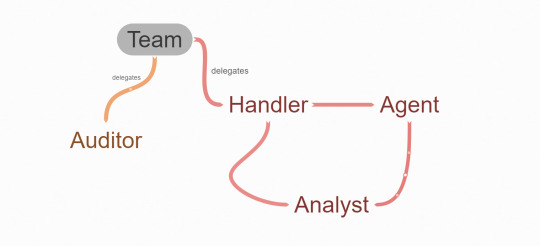
A diagram of the basic intelligence apparatus.
The basic intelligence process would go as follows: Information would be split or categorized into four main areas: strategic, campaign, logistic/operational, and tactical. For each of these levels, there would be a repeating loop process of setting goals in relation to those areas, gathering the information, analyzing it, figuring out how to use it, and a method to evaluate the process. Information can be gathered by agents or anyone else in the organization, anonymously. This helps bolster the capacity of information gathering.
So, we start by asking, what do we need to know to achieve our aims? Then, we ask about where we can find that information. As we’ll probably receive more information than what is usable, we want to ask about what information found is important, timely, and accurate/verifiable? After that, we want to ask how we can package and disseminate the information, along with an understanding of the audience(s). That leads us to review what we’ve done, integrate any changes, and start the process over. This is not to say that teams can’t do intelligence-gathering work themselves, such as scouting or information synthesis. It is just useful to have capacity specifically built for that work.
How these forms relate
Finally, we want to look at the relationship between the organizational forms, and how these forms change, depending on what the specific organization does. We can do this by understanding how things look through the classifications of overt, covert, and clandestine.
Overt organizations act out in the open. They operate in a mode where what you see is what you get. Phantom cells might operate as front-facing aboveground collectives of folks who have a very specific focus, with the intent to popularize and virally spread action around that focus, through building (para)social relationships. Networked guerrillas might make more intentional, long-term connections between cells, leading to a more tightly bound network. This could look like the mesh model. Fractal teams might have highly accessible and legible teams and assemblies with centralized information pipelines, creating an easy way to get involved with the movement. This point is important when we’re thinking about how to make the movement accessible.
Covert organizations act in secret, operating on the mode of plausible deniability. Phantom cells might use mainstream channels to share their ideas but operate in a way that obscures their identities. Networked guerrillas might have the cells be related using a star model, with many connections compartmentalized by those shared nodes. Fractal teams might hide membership and focus on the intake process because this formation is the most vulnerable to infiltration. Maybe this formation isn’t useful outside of the overt context.
Clandestine organizations are fully underground. Phantom cells might only spread action through hyper-encrypted or low-tech methods. Networked guerrillas might have no awareness of who or what the composition is of other teams in the network, and any connections between cells might be mediated in ways that maintain anonymity and prevent infiltration. Fractal teams likely would be a great weakness in this context.
Looking at all of these forms, across different modes of operating, we should not “pick” one form or the other in a dogmatic way. Each form should see the others as providing something of value towards anti-authoritarian ends. In other words, fractals should not decry networks or phantoms for their seemingly chaotic structures or methods. Phantoms shouldn’t shit on the other two for not being effective enough. Aligning people and actions across these horizontal forms will allow an ecosystem of forms that reinforces the ability of each to succeed. Overt groups can act as an auxiliary force for the covert and clandestine groups, and the covert and clandestine groups can create spaces for the overt groups to construct the world they are all working for.
By having principles and ethics that are sound, exploring what organizations need to do, and creating structures that enable those ethics and principles to be realized, we can have social technologies that allow us to more easily accomplish the social change that we’re seeking.
#direct action#solarpunk#social revolution#social relations#socialism#anarchism#anarch#anarchocommunism#anarchist#organizing strategy#organizing#insurrection#council communism#councilism#libertarian socialism#anarchy#leftist#leftism#anti state#antistate#anticapitalism#anti capitalism#organization#organização#organización
15 notes
·
View notes
Text
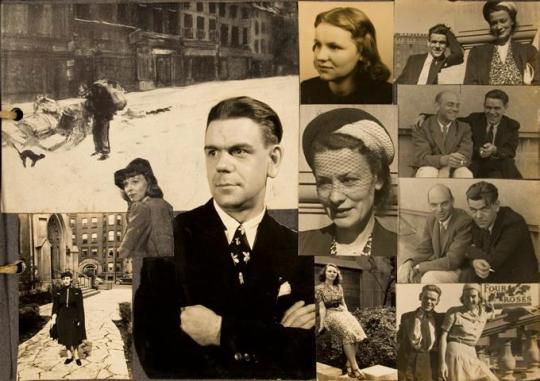
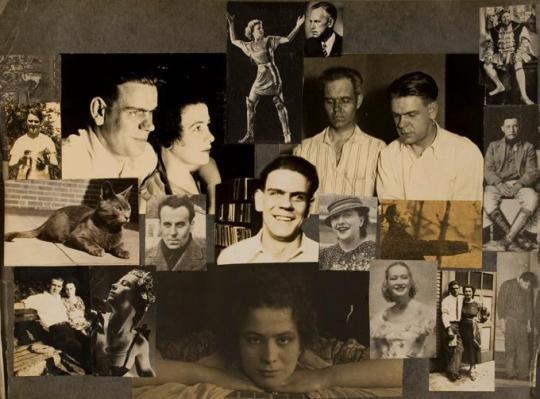
#paul mattick#mattick#councilist#councilism#council communism#communist#communism#socialist#socialism#marx#marxist#marxism#stalin#stalinism#stalinist#karl marx#lenin#leninism#leninist#vladimir lenin#anticapitalist#anti capitalist#anticapitalism#anti capitalism#leftist#leftism#leftwing#left wing#communist left#marx and keynes
4 notes
·
View notes
Text
Leftcoms on Tumblr rise up!
3 notes
·
View notes
Text
Random Thoughts on Marxists
This is gonna be me just rambling about things I saw on marxist spaces. I'll be focusing on experiences I had with council communists (CC) and Left communists (LC)
Dogmatism
Ok, I wanna be honest, this is just a vibe I got. If u had to ask me for tangible evidence, I'd be 🤷♂️
Is just a feelin I got of "this is the way to go cause Dude in 1924 said so". It feels very restricting, takin away the potential that human imagination has in socialist movements
It felt like "this is the way! Oh ure more keen on this idea? Let me see what Dude said in '32...mmm sorry! Can't do it!"
But maybe is just me! I'm the type of kid to ask why a 100 times! Did I ask why a 100 times? Not really I was a shy kid, but in my mind I did it so it counts
On Anarchy
Idk the hate coming from Marxists towards anarchists! And I'm not even talking about MLs, I'm talking about marxists/communists that have more in common with bakunin that with lenin!
Like, I remember a CC (council communist) talking about an anarchist revolt (in a hypothetical communist revolution) on the same terms of a counter revolution by reactionaries!!
Or how a CC insta page made fun of an anarchist comparing Lenin to Lasalle (socialist that though that socialism could be achieved by takin control of the state. Marx didn't like him) and being something like "anarchist critique of lenin is bad!"
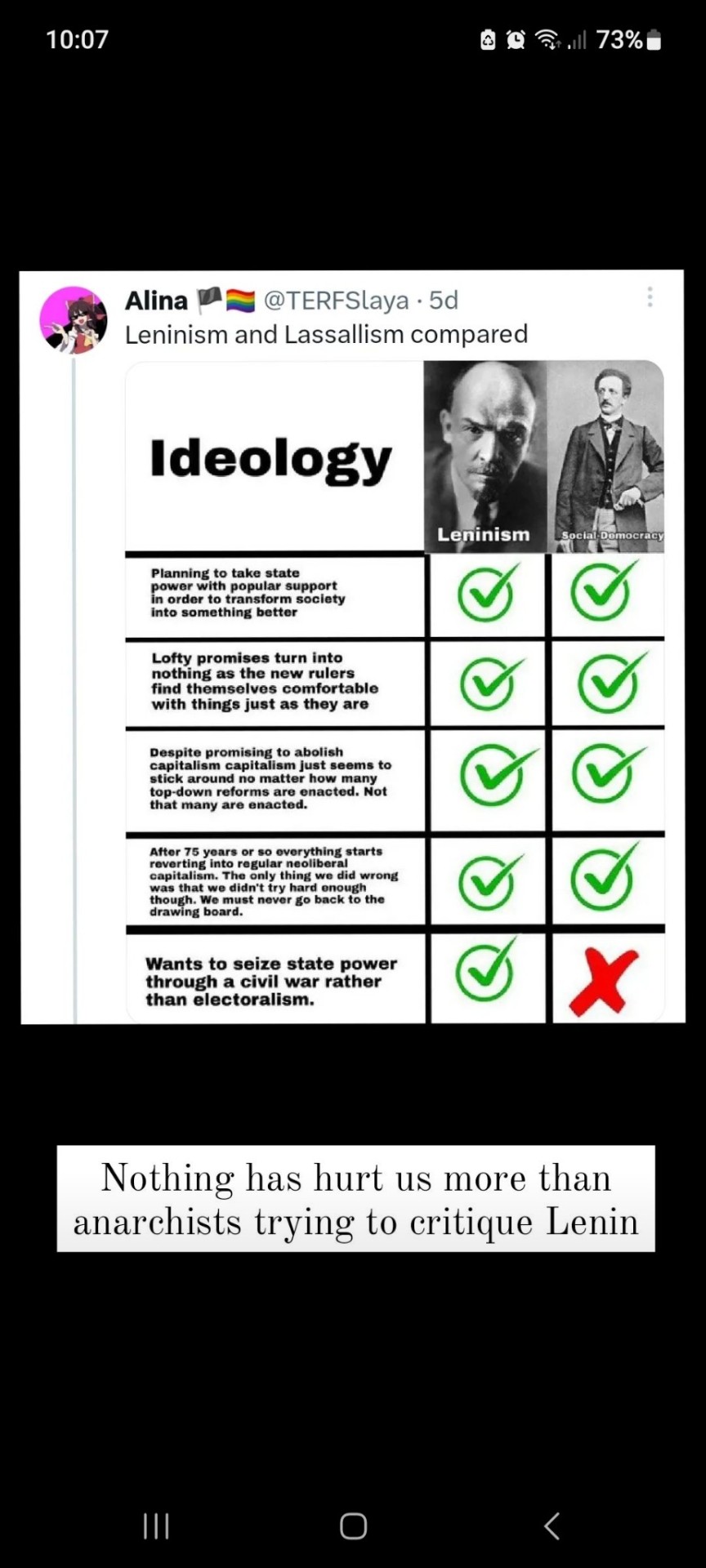
And I was like "Bro, half the memes u posted are just you sayin that lenin and lasalle are the same!!"
Another thing that I notice is this mentality off "if a marxist said X, that's good, if an anarchist said the same thing, then bad!"
I heard ppl talk about Marxists sayin that the "dictator of the proletariat" is the revolution itself and I was like "ok, that feels like anarchism but with some marx sprinkles in it!"
The end goal is the same, the way of achieving it is the same, the anti-authoritarian sentiment is the same BUT we ain't anarchists! No no no, we're total opposite actually!!
On Ukraine
Since the beginning of the invasion, I heard so many shit takes from the left. When I heard em from MLs I was like "shit take? Yes, but I wasn't expecting something else from yall" But from the left communists?
They can only chant "no war but class war" wich is nice, don't get me wrong, but is...just bs
They always go against the MLs cause they're not good enough on examining the world, that MLs are just too blinded by propaganda, how MLs don't have a grip on the world, and then the only solution they give is "the Russians and ukranians soldiers should go against their generals and politicians (to achieve socialism)"
In what world will this happen? Defenetly not in this one!! How distant can you be from the real world to say that ukranian soldiers just have to go and fight their politicians!
I'd be like telling someone's who's house is burning down to go and beat the cops that arrived at the scene cause they're class traitors! They are, but saving the house from the flames maybe takes the priority!!
I'm not a patriotic person. I never was. So my thinking doesn't come from "we must save our country!" type of sentiment. It comes from a "This is my house, the street where I used to walk my dog, the bar where I used to go and chill with friends"
Idk how to end this ramble...if u read it all, damn, ure one cool person. If u have something to say, be nice about it. Have a good day!!
4 notes
·
View notes
Text

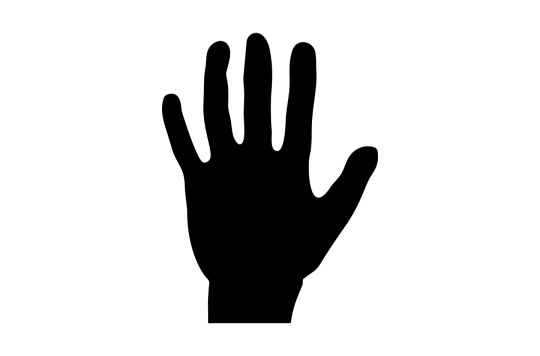

A few flag re/designs of various political ideologies I made.
Council Communism
Humanism
Liberation Theology
#flags#vexillology#new flag#flag design#flag redesign#vexillography#design#redesign#political ideologies#political ideology#ideology#Council Communism#Liberation Theology#Humanisn
3 notes
·
View notes
Text
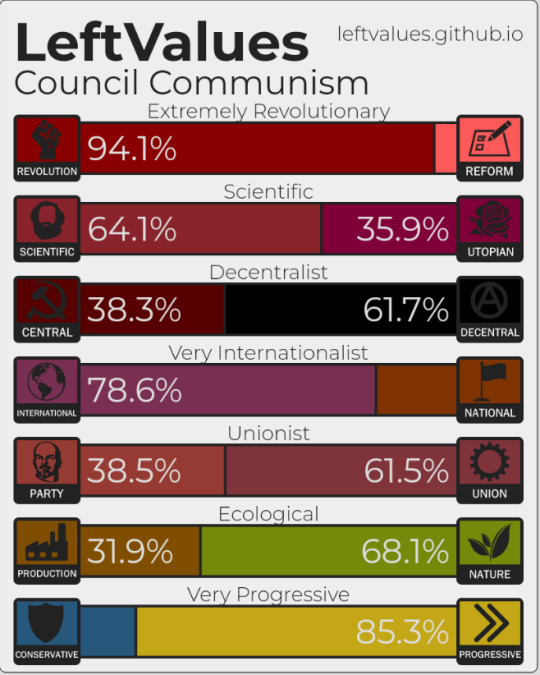
#ooc#ooc post#leftism#leftist#leftvalues#Council communism#Council communist#communism#communist#socialism#anarchism#anarchist
1 note
·
View note
Text
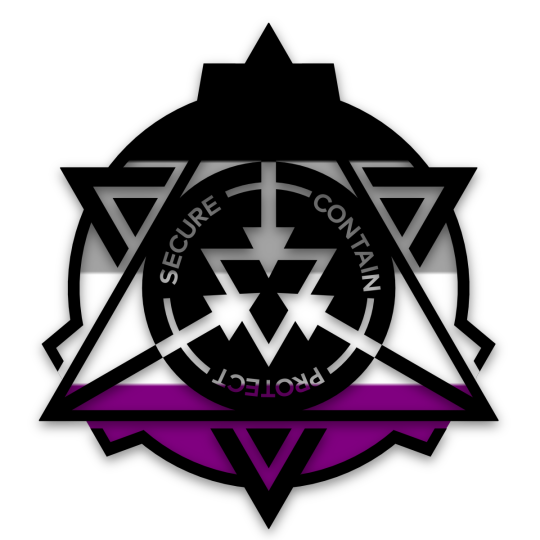
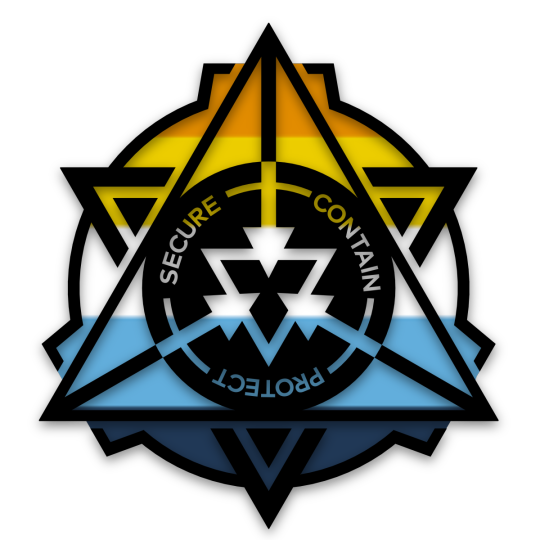




Asexual / AroAce / Aromantic O5 Council + Ethics Committee logos
#liom#mogai#pemogai#pro endo mogai#lgbt#lgbtq#lgbtqia#lgbtq community#lgbt pride#my edits#my edit#edit#scp#o5 council#ethics committee#aromantic#asexual#aroace#anti exclusionist#aspec
180 notes
·
View notes
Text
Illinois Governor JB Pritzker has signed a bill that is aimed at fighting homelessness.
Called “Home IL,” it will bring state agencies, nonprofit organizations and other advocates together. The bill focuses on an equity-based approach, which includes the voices and contributions of those who have experience homelessness.
It codifies the collaboration to move Illinois to “functional zero” homelessness by bolstering the safety net, targeting high-risk populations, expanding affordable housing, securing financial stability for unhoused individuals and closing the mortality gap.
“Every person deserves access to safe shelter and the dignity that comes with housing,” Pritzker said. “This is a first-of-its-kind multi-agency cooperative effort — bringing together state agencies, nonprofit organizations, advocates, and people with lived experience to prevent and end homelessness. I’m grateful for their dedication and believe that together, we can prevent and end homelessness once and for all.”
Rockford has already taken strides in this aspect. In 2017, it became the first community to reach “functional zero” levels among veterans and the chronically homeless.
Illinois’ Interagency Task Force and Community Advisory Council works across 17 state departments and agencies, as well as over 100 processes, programs and policies, to develop a comprehensive plan to combat homelessness.
The goal of the plan is to prevent shelter entry or ensure that shelter stays are limited and lead to quick transitions into stable living situations.
Pritzker has also committed about $360 million for the initiative in his FY24 budget. These investments include:
• $118 million to support unhoused populations seeking shelter and services, including $40.7 million in the Emergency and Transitional Housing Program.
• $50 million in Rapid ReHousing services for 2,000 households, including short-term rental assistance and targeted support for up to two years.
• $40 million in Permanent Supportive Housing (PSH) Capital funds to develop 90+ new PSH units providing long term rental assistance and case management.
• $37 million in Emergency Shelter capital funds to create more than 460 non-congregate shelter units.
• $35 million for supportive housing services, homeless youth services, street outreach, medical respite, re-entry services, access to counsel, and other shelter diversion supports.
• $21.8 million to provide homelessness prevention services to approximately 6,000 more families.
• $30 million for court-based rental assistance.
• $15 million to fund Home Illinois Innovations Pilots.
• $12.5 million to create 500 new scattered site PSH units.
“People experiencing the trauma of housing instability are our neighbors and community members who deserve to be treated with humanity and dignity. With this cooperative effort, Illinois is ensuring our state agencies can continue to collaborate, and that stakeholders are at the table with us, to support our most vulnerable in living healthy, well, and with dignity.” Lieutenant Governor Juliana Stratton said. “Our state is making it clear that we will continue to work together so we can all move forward, and we will focus on holistic strategies that bring us closer to ending homelessness in our state.”
#us politics#news#my state line#Illinois#gov. j.b. pritzker#2023#homeless#homelessness#house the homeless#houselessness#Home IL#end homelessness#expand affordable housing#mortality gap#Illinois’ Interagency Task Force and Community Advisory Council#Emergency and Transitional Housing Program#Permanent Supportive Housing#Emergency Shelter#supportive housing services#homeless youth services#street outreach#medical respite#access to counsel#homelessness prevention services#court-based rental assistance#Home Illinois Innovations Pilots#Juliana Stratton#progressivism#progressives#Democrats
518 notes
·
View notes
Text

Liara T'Soni from the Mass Effect series is a council communist!
64 notes
·
View notes
Text
"
Lenin said: "The proletariat needs state power, a centralized organization of power, an organized force for suppressing the resistance of the exploiters and for readership of the great masses of the population, peasants, petty bourgeoisie, semi-proletariat, and also for the establishment of socialist ownership". (Lenin State and Revolution page 142, Russian edition, free translation). "But it should not be forgotten", says Lenin, quoting Marx. "That the proletariat needs only the state which is withering away".
That is how Lenin refers to this matter. And what does the bourgeoisie need? The bourgeoisie, the exploiting class, needs the state as a permanent force for maintaining the exploited classes in subjection, meaning the majority of the people. The bourgeoisie does not contemplate the weakening of the state machinery, to say nothing of its withering away, for it considers its system, the system of exploitation, immortal and perfect.
Accordingly, the difference between the bourgeois state, no matter how disguised it may be by a democratic screen, and our state, for instance, is that the bourgeois state, an apparatus of force in the hands of a minority, meaning the class exploiter, oppresses the majority of the people and has the tendency to increase in strength. Here, although the state has the job of restraining the minority of exploiters and enemies of new Yugoslavia, it is gradually dying away, for its functions, primarily in the economy, are gradually being transferred to the working people.
According to Marxist science, the state is a product of "class conflicts", and it will wither away when classes disappear, when there is no longer anyone to suppress or any reason to suppress them.
Where is the beginning of this withering away process in our country? I shall mention only the following examples. First, decentralization of the state administration, especially in economy. Secondly, turning over the factories and economic enterprises in general to the working collectives to manage themselves, etc. The decentralization of economy and political, cultural and other aspects of life is not only profoundly democratic but has inherent in it the seeds of withering away not only of centralism, but of the state in general, as a machine of force. This is a fact which anyone can check on here if they want to.
How do things look in the Soviet Union thirty-one years after the October Revolution? The October Revolution made it possible for the state to take the means of production into its hands. But these means are still, after 31 years, in the hands of the state. Has the slogan "the factories for the workers" been put into practice? Of course not. The workers still do not have any say in the management of the factories. They are managed by directors who are appointed by the state, that is, by civil service employees. The workers only have the 'possibility and the right to work but this is not very different from the role of the workers in capitalist countries. The only difference for workers is that there is no unemployment in the Soviet Union, and that is all.
Therefore, the leaders of the Soviet Union have not, so far, put through one of the most characteristic measures of a socialist state, that of turning over the factories and other economic enterprises to the workers so that they may manage them. Since the Soviet leaders consider state ownership as the highest form of social ownership, the fact that they have not turned over the means of production to the workers to manage probably issues from such a conception of state ownership. Besides, this is altogether in accordance with the strengthening of their state machine. That is also a fact that anyone can ascertain for themselves, if they want to learn the truth."
Josip Broz Tito, 'Workers Shall Manage Factories in Yugoslavia', June 26, 1950.
#josip broz tito#theory#yugoslavia#marxism#leninism#syndicalism#communism#anarchism#council communism#decentralization#market socialism#titoism#balkans
6 notes
·
View notes
Text
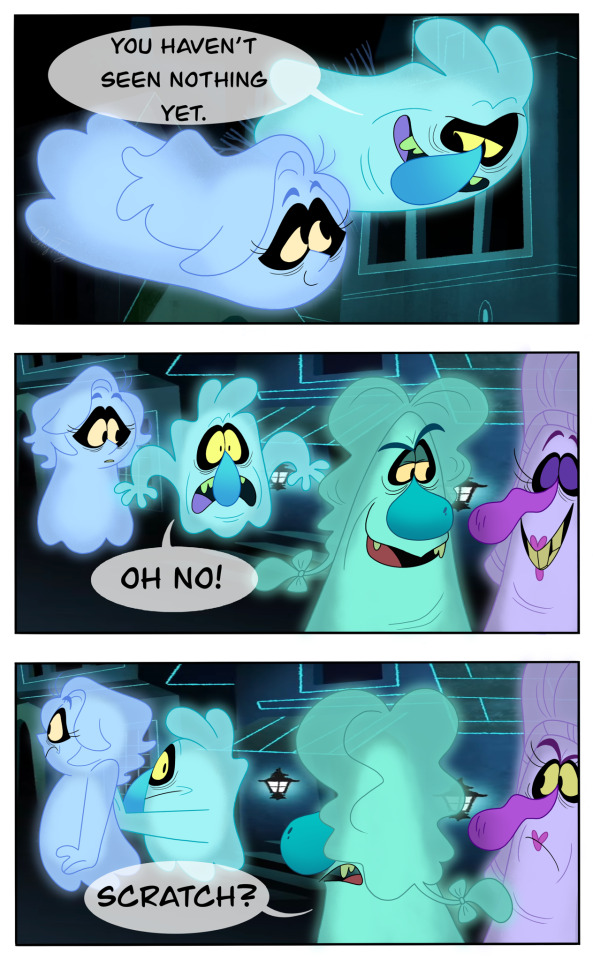




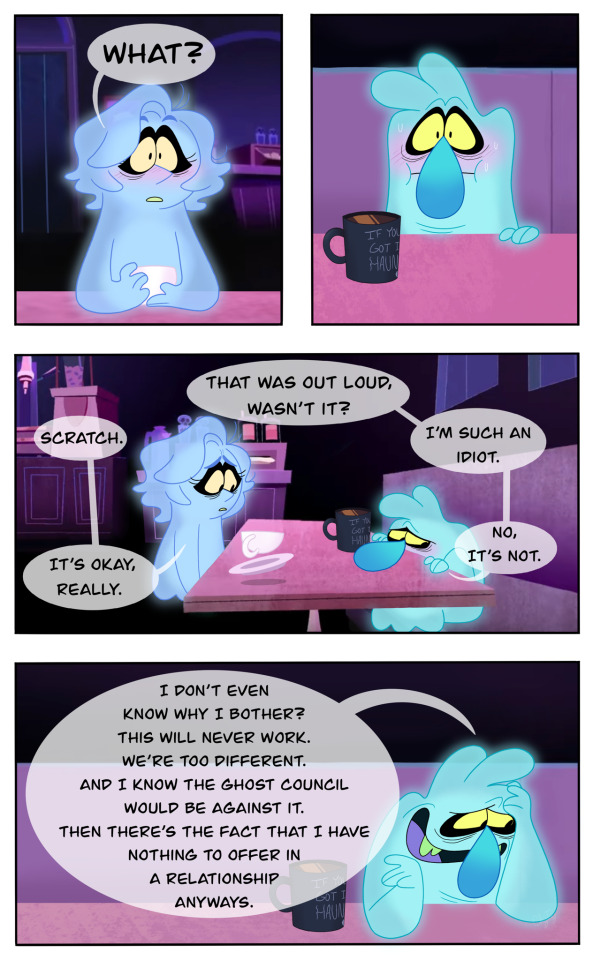

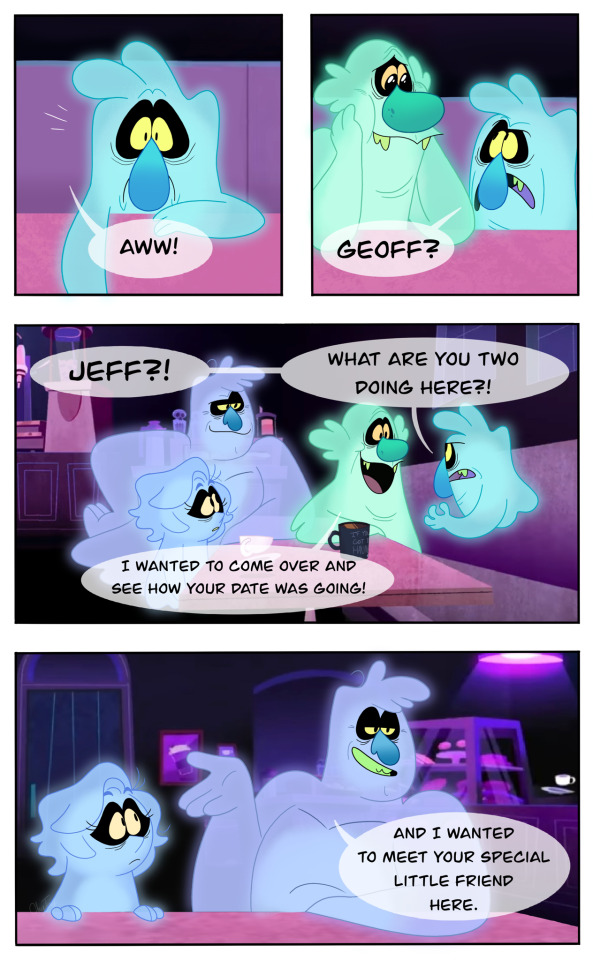


First | Previous | Next
#BACKGROUNDS ARE FROM THE SHOW!#wanted to get this part done before the holidays so here ya’ll go#first time drawing the ghost council and Jeff so hopefully they look alright#like I’m so damn shy about these pages but also glad I finally got to this part#❤️ scratchyenne ❤️#self insert#self ship#canon x self insert#ghostsona#🎨 chy creations 🎨#comic#tgamm#the ghost and molly mcgee#I’m tagging the show this time I being brave today lol#self ship community#long post
303 notes
·
View notes
Text
A sketch for the moment, a strategy for radicals
I read a piece today about Insurrectionary Councilism and it may have just been what I needed to formulate something I’ve been trying to figure out about strategic positioning for our current moment. Basically, it’s meant to figure out what to do to create a left movement that is actually capable of getting us what we need. That is bottom-up socialism. So, While I’m writing a more involved thing exploring this topic, I thought I’d share some thoughts in progress rn.
One thing I’ve been thinking about is the idea of seeing social movements as an ecological system. Different organizations operate as different species, and the color/shape of the movement is dictated by the relationships between the different parts. We’re at a moment where ‘the left’ is mired in high mobilizations but low levels of radical organization. This is problematic because we can’t garner meaningful concessions from the powers that be, nor can we go the distance to establish a new structure. The model of professionalizing revolutionaries (through democratic centralism and vanguards) is also not great because it doesn’t popularize autonomy and self-direction. We could and should form revolutionary organs and affinity groups with high alignment, but the strength of those spaces can easily become a weakness. I think that insurrectionary councilism is a way out, that strengthens our ability to engage and build meaningful movements.
So, insurrectionary councilism is basically the idea of creating an intentional space for different movements/organizations/etc to come together and experiment through direct action. The basic format described would be that in a given area, like a city, different groups that cover different issues, like policing, environmental racism, transphobia, etc. Would come together to figure out how to address those issues through direct action (as defined by anarchists, not liberals). The folks in this space would be folks who are already radical. They wouldn’t have to be libertarian socialist or anarchist in name, but they’d have to agree with basic points of unity that align with anarchist practice.
This excites me because it can allow us to catalyze more radical action in movements without trying to dominate or take them over in a coercive way. This approach of having the folks ready to throw down holding space for one another and being able to meet across tendencies and plan action. We can respond to threats in a more effective and quick way, build capacity, and potentially move out of a place of pure reaction using this form.
We also want to pair this with the slow-burn method of what especifists call social insertion, where folks from organizations with a specific political orientation work in social movements to propagate libertarian socialist values. This takes a long time and is more about building relationships with the widest possible net of folks who have some shared self-interest.
By pairing insurrectionary councilism with social insertion, folks in politically dedicated groups can both have structures that prefigure horizontality through the slow process of evolution, and structures that crack open spaces for horizontality through insurrection. These can become mutually reinforcing, where as direct action is successful, more people become interested in the ideas they heard from the social inserters. As more people start to organize and get acclimated to the ideas of libertarian socialism, they might support direct action efforts.
This idea is so dope to me because of its potential to amplify the anarchic thrust of lots of movements while inoculating them against authoritarianism. We can respond quickly to different threats and widen the spaces of autonomy while building relationships and solidarity.
#direct action#solarpunk#social revolution#social relations#socialism#anarchism#anarch#anarchocommunism#anarchist#organizing strategy#organizing#insurrection#council communism#councilism#libertarian socialism#anarchy#leftist#leftism#anti state#antistate#anticapitalism#anti capitalism
8 notes
·
View notes
Text
Are you normal or did you use being attracted to almost the entire main cast as a reason when trying to convince someone to watch community
#fandom#community#community nbc#annie edison#britta perry#jeff winger#abed nadir#troy barnes#shirley bennett#literally sometimes it just blew me away watching it early on#that I get to look at Annie Abed Britta AND Troy all for free & the show is good too???#also Jeff’s not bad looking either he’s just totally not my type#mostly Annie & Abed are teehee 🤭#but then again BRITTA & TROY 👀#basically everyone besides Pierce is kinda hot lmao#blorbo high council
71 notes
·
View notes